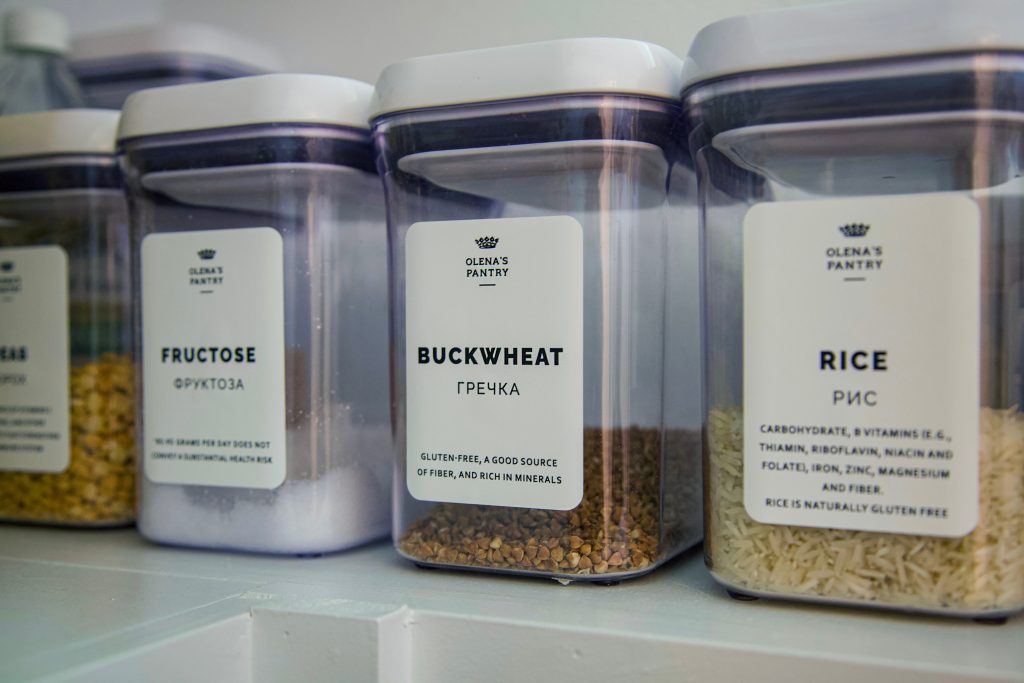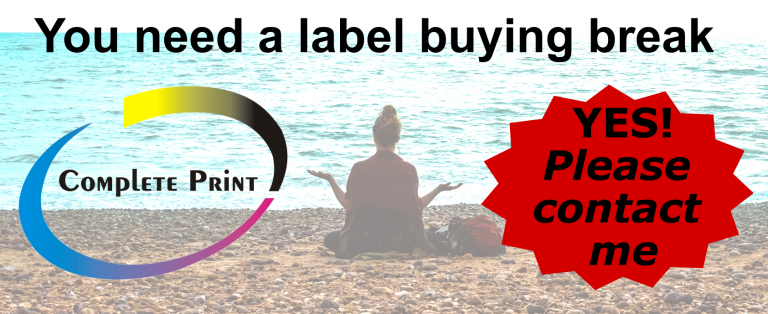Label printing companies, best pricing and quality
The most comprehensive list of South African label printing companies
Just think about it..
Label printing companies produce a huge variety of labels these days. Next time you look at labeled containers, just imagine how different the world would have been without them. Certain products are obvious without a label, but many would just be nameless receptacles with who knows whats inside. Once you start to look, you will realise that labels are everywhere. Complete Print can help you with your next label printing job. Contact them anytime.
How it started
Labels first made an appearance nearly 300 years ago. Pharmacists used them to identify the contents of medicine containers. Winemakers started using glass bottles 200 to 300 years ago. Label printing companies did not exist at that time. Handwritten labels became a necessity to carry pertinent information such as the winemaker, vintage and varietal. Each label was handwritten, which was labour intensive. Some labels even included a drawing. Each label was hand glued or tied to each bottle.
Pierre Perignon, a French monk used to tie a piece of parchment to the neck of his bottles. These earliest known labels helped him improve Champagne’s quality and production. Large-scale printing of wine labels first came into being about 200 years ago. Machinery able to make paper and the invention of lithography made this possible. Colour printed labels followed approximately 150 years ago. Creative designs could now be reproduced. This helped to make the bottles stand out on the shelves.
The modern label
R. Stanton Avery invented the self-adhesive label in the USA in 1935. Adhesive quality was finally improved 30 years later. Mass produced was now made possible. R. Stanton Avery’s company grew and is still running successfully to this day as Avery Dennison. A division of the company, Avery, produces blank labels that are already kiss cut. They can be individually peeled off the backing sheet without having to cut them to shape and size. Small batch manufacturers and people at home and office were now able to design their own labels. Computers and inkjet printers helped make this a reality. You will find similar products available here in South Africa under the names of Tower and Redfern.
A handheld label embossing machine was developed in 1958 by Rudolph Hurwich at a company called DYMO in the USA. Home and office labelling needs were solved with this “on the go” solution. DYMO proved to be very popular and improved their technology. They have become a major manufacturer of portable label printing machines . DYMO products are found worldwide.
Use Complete Print to get the best solution for your Label Printing requirements
How it took off
The barcode was introduced for retail applications in 1974. Label printing was perfect for this. Originally invented in 1958, it took many years to perfect for commercial and retail label use. This humble set of lines has helped many spheres of industry and commerce have a better understanding of stock quantities and movements.
The barcode is, unfortunately, rather limited in the amount of data that it can carry. Able to be read in one direction only also has its limitations. Car parts manufacturer, Denso Wave, needed a new printed label. The design allowed for more data inclusion and that it be read from any angle. Denso Wave were very kind to allow this to be freely used by anyone provided they follow some standards. The smartphone helped this QR code or Quick Response code to become a well recognised method of data transfer. One of it’s more popular uses is to take you to a website quickly without having to type in the URL.
Flexo by choice
Modern commercial label printing companies use a process commonly called flexo printing. The full name for it is flexographic printing. It is a method that lends itself to being able to print on a variety of surfaces from film to cardboard and across many substrates, such as plastics, metals and paper products. This print system makes it a great choice for label printing machines and there are dedicated high-speed label printing machine models available that produce excellent print quality at high speeds.
One of the first choices one can make with printed labels is what substrate to use and there are a number to choose from.
Commonly used self-adhesive papers
Cast coated, which is a white paper and the face is a glass like high gloss surface. This is good for the highest quality multi colour labels and it allows for a very sharp definition of the print.
semi-gloss finish on the face. Has very good printing results and is particularly good when using brilliant inks. It is suitable for advertising campaigns, pharmaceutical and makeup packaging. It holds well to curved surfaces.
Uncoated or vellum options which have an uncoated face yet can still have a high level of whiteness that takes ink very well. This is a very common type of paper label that is used in manufacturing and industrial applications, general information, and standard products.
Some other interesting paper substrates are ones that have been designed to handle deep freezing and exposure to water which is perfect for cold beverages. There is even a wood-free label that is made from sugar cane. For a transparent label one can consider polyethylene or polypropylene, these are also available in non-transparent white and even various metallic-looking options.
It’s in the ink
One of the most popular inks used in flexo label printing companies is referred to as UV ink. There are many reasons for its appeal. They are Volatile Organic Compounds, (VOC), and solvent-free. They are very good at withstanding physical and chemical damage which means a protection layer of clear varnish is not required. There is the ability to carry a high brightness and to print much finer dots that can have images looking very sharp and punchy. One of the biggest appeals is that the printed ink is cured using ultraviolet light as the press is running so there are no delays or slower speeds waiting for the ink to dry, which equates to quicker turnaround times, (hence the name UV ink).
Finishing for attention
So far, we have covered the types of substrates and the ink that is used. The final trump card is the various finishing options that a label printing machine can provide in-line.
Die-cutting is the method used to produce a specifically shaped label using a pre-made one. Once the job is printed, the unprinted paper is removed, leaving just the required labels behind on the roll.
Surface varnish is a final complete covering layer of matte or gloss clear ink designed to firstly add a further layer of protection but is also used to enhance the look and feel of the label. This layer is also cured using ultraviolet light.
Embossing is used to raise chosen parts of the design of the label to give it a slight 3-dimensional look and it has a pleasant tactile. The opposite, called debossing creates the opposite effect and is usually used with the lettering to create an impression of quality.
Foiling can help certain designs have that extra edge as it is a film of foil that is stamped onto the printed label to give a metallic, special effect, or solid colour finish. The foiled area can usually also be embossed at the same time for a high-quality look and feel.
Perforation, a row of small holes such as between postage stamps, can be particularly useful if your label needs to have a section that can be removed for some reason. This too is done in-line.
Security printing is offered by some label printers. This can take the form of a hologram to show it is not counterfeit and a QR code to prove it is not counterfeit.
Individualism is easy
Variable data is used to individualise each label as it comes off the press. This would mean one label can be completely different in wording, colours and images from the next one and has great applications in the manufacturing sector. Due to the method of application, this service can only be offered by a label printer that would have digital label printing equipment. Contact one of our experts at Complete Print and we can supply you with a great variable data quote from one of the top label printing companies at no additional cost to you. To make for a smoother print ordering experience, read our article entitled Prevent your print company from delivering late.
Have a look HERE for some award winning label ideas in this article by 99 ideas.
Use Complete Print to get the best solution for your Label Printing requirements
Directory of label printing companies
This is not a complete list but is updated often. If you would like your company listed then please message us on our contact page.
A:
B:
C:
D:
E:
F:
G:
H:
I:
J:
Julius Solomon Specialist Labels
K:
L:
M:
N:
O:
P:
Q:
R:
S:
T:
U:
V:
W:
X:
Y:
Z:




